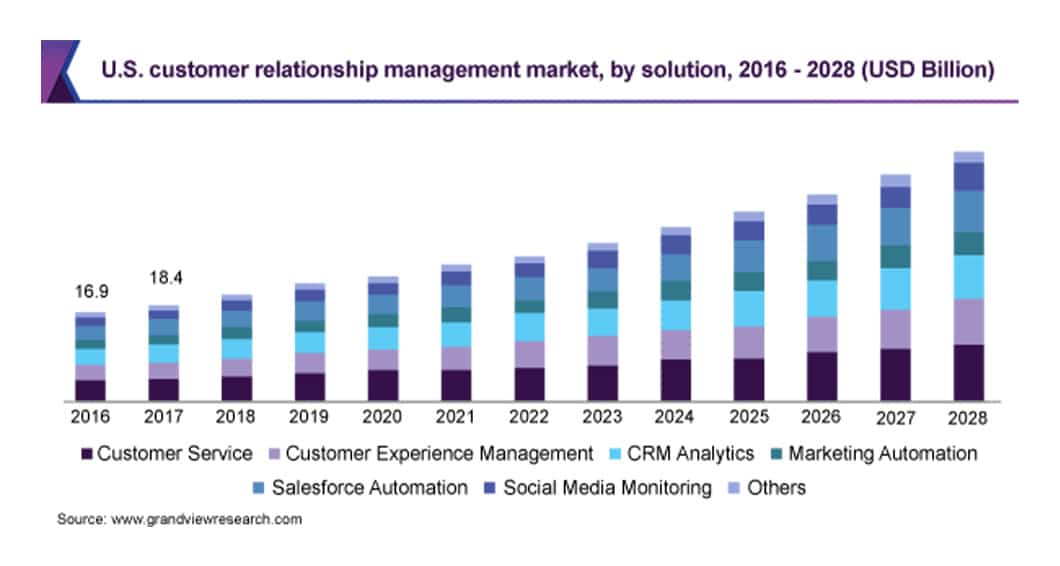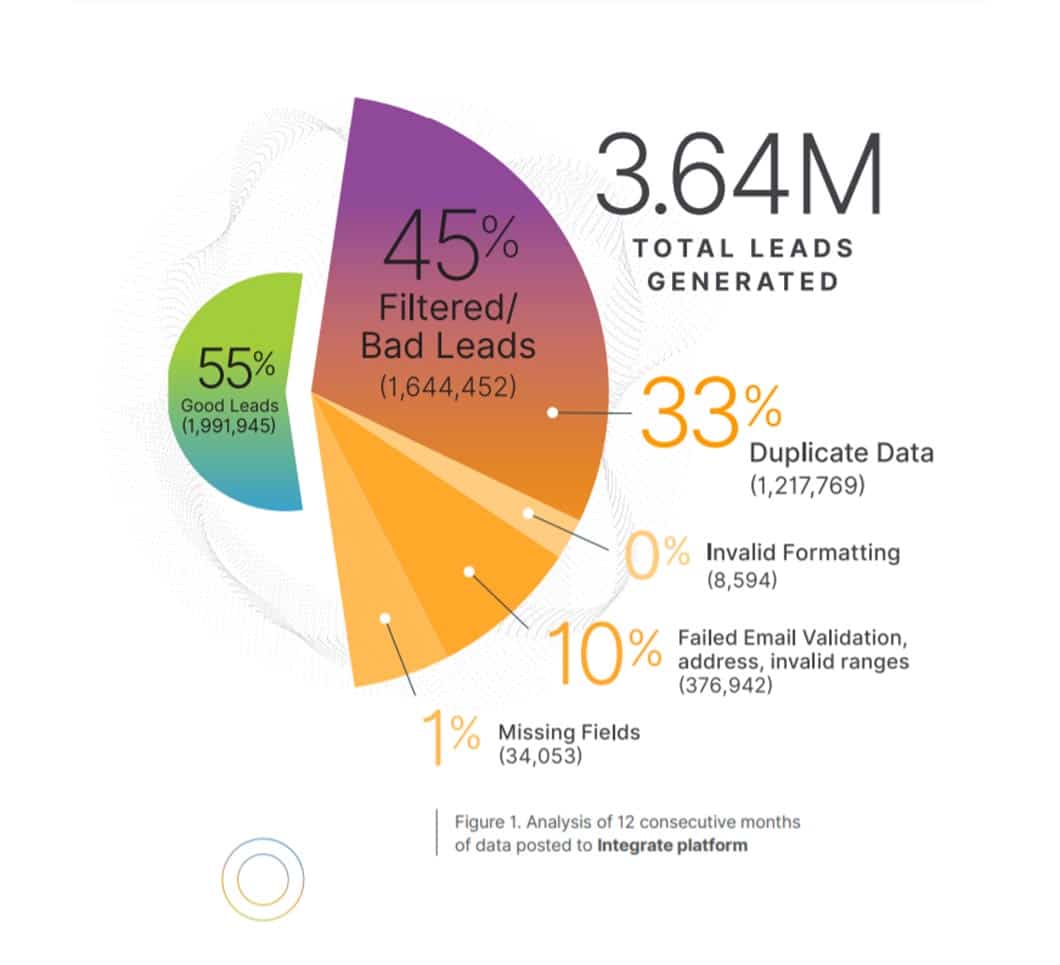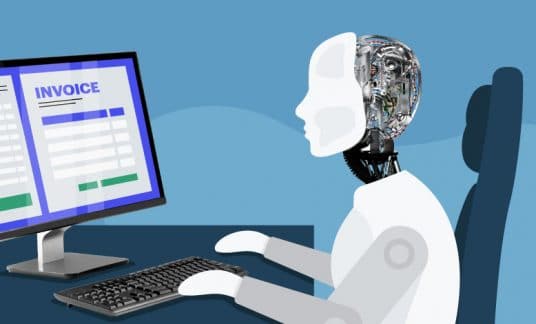Let’s bottom-line it: Knowing how to clean up customer relationship management (CRM) data is key.
Coming up with marketing campaigns to help bring your target audience down your sales funnel is a goal all businesses strive for. There are many ways they can do it, and one of them is by doing CRM.
According to Grand View Research, CRM’s growth is expected to climb to $96.5 billion from $47.6 billion over a seven-year forecast (2021 to 2028) at a compound annual growth rate (CAGR) of 10.6%.

However, it isn’t just about using CRM to help improve communications and relationships with your audience. It’s also about how you store and treat the data in it.
We’ll cover what data cleaning is, how to clean up your CRM data and why it is important to your data strategy.
What Is CRM Data Cleansing?
CRM data cleansing refers to the process of eliminating or repairing bad data and records in your CRM software. Data includes personal information such as (but not limited to):
- Name
- Email address
- Contact details
- Company
- Job title
There are multiple reasons why the data is or becomes incorrect over time:
- Outdated information – It’s possible that your prospects or clients changed job titles and employers without informing you. Or they changed their email addresses or telephone numbers, which is why you can’t reach out to them anymore.
- Improper formatting and spelling – Assuming that people are filling out your forms themselves, they may have used different formatting conventions for some of the entries. As a result, your CRM software can’t process their personal information properly. This also applies to entries with incorrect or misspelled information in the form.
- Duplicate data – Your CRM software won’t be able to detect multiple entries of the same person in its database. To be fair, CRM tools can only do so much, so you still need to double-check if the contact data merging was successful or not.
By identifying erroneous or outdated information in your CRM, you can launch marketing campaigns targeting people in your list and ensure that your message goes through their inbox.
How Do I Keep My Data Clean in My CRM?
Cleaning your CRM data is not a one-time activity, but a regular one. Assuming that your business is receiving a steady stream of leads on top of existing clients, you need to make sure that all the information that shows on the form is correct.
Manage Duplicate Records Properly
Duplicate records are the biggest culprit of bad CRM data.
In Integrate’s “Cost of a Bad Lead” guide, the business-to-business marketing company collected more than 3.64 million leads in 12 consecutive months.
Among the gathered leads, 45% of them are filtered or bad leads. And out of that percentage, 33% are duplicate data.

How Does This Happen?
Duplicate records take place if the same contact signs up to different lead capture forms on your website. Also, if you’re exporting data from one CRM tool to another, some of the entries might get duplicated especially if you or your team member responsible for exporting the CRM data does something wrong.
Having multiple entries of the same person in your CRM could mean they might receive the same email from you more than once. This could annoy them and lead them to unsubscribe from your list.
There are CRM data hygiene tools that help you manage duplicate records and what you need to do with them. For example, TIBCO Clarity allows you to take raw data and weed out the bad and incorrect information. You can also profile the data to see outliers and patterns and verify them using the rules you’ve created. Finally, you can clean your CRM data by merging duplicate entries and streamline the formatting of the details in each.
Establish Standard Practices and Conventions for Data Entry
The conventions you intend to use in your CRM should be uniform across all entries.
Below are standard practices you should think about for the data in each record:
- Name – Are the first letter of each name capitalized? Also, do you allow contacts to use their real names or nicknames?
- Home address – Do you abbreviate “St.,” “Dr.,” or “Blvd.,” or do you spell them out (“Street,” “Drive,” and Boulevard)?
- Phone number – Do you include the country and area codes? If so, do you keep them in parenthesis, i.e., (1) 202-555-0102, or do you write them down after entering the plus sign, i.e., +1-202-555-0102?
- Job Title – Similar to home addresses, do you abbreviate titles such as “Dr.,” and “Atty.,” or do you spell them out (“Doctor” and “Attorney”)?
These are just some of the things you must consider when building guidelines that you and your CRM specialists must make happen. This ensures that all the data in your CRM is validated so you won’t have to encounter issues down the line.
Limit CRM Access to a Few
As the saying goes, having too many cooks in the kitchen could spoil the dish. This applies to your CRM as well. Your sales and marketing teams’ lack of familiarity with the standard practices and conventions in how to treat information could result in erroneous data, rendering the records useless.
To eliminate this problem, you need to provide CRM access to only a handful of people who are familiar with your CRM guidelines. By limiting the number of users working on the platform, you also minimize the risk and make troubleshooting the issue less of a problem.
Stick to a CRM Data Maintenance Schedule
Clearly, cleaning up CRM data is a continuous process. As long as you have leads and clients in your database, your job of monitoring and verifying details of your records never ends.
You can conduct regular maintenance every month to ensure that all your records are accurate and up to date. Make sure to never miss a date because you don’t want incorrect data to carry over the following days. This may distort the results of your marketing campaigns and prevent your business from meeting its goals.
Also include reviewing unengaged contacts who haven’t opened your emails for the past months as part of your regular maintenance. Ask your specialist to manage these contacts in line with your company policy. Either get them to respond to you and keep them onboard your CRM or archive or delete them if they’re no longer interested in your business. Regardless, you can sanitize your data and hopefully increase your engagement rate.
The Importance of CRM Data Hygiene
The growth of your business hinges on how many prospects you can close into clients and sustain them over a period. And you can only do this if you have accurate information from each and every one of them.
However, problems happen with:
- How your CRM software manages the data of your contacts
- How prospects and clients entered their information in your forms
There’s a chance that your contacts changed their details, rendering the existing data in your CRM obsolete, too. Because you don’t have the latest information of prospects and clients, you won’t be able to build and sustain a relationship with them that is fostered on trust.
These variables, therefore, result in lost prospects and clients, leading to decreased revenue.
By performing CRM data hygiene, you can launch your marketing automation campaigns without a hitch. For instance, you can launch a drip campaign to your leads in the hopes of converting them into clients.
Having the right information in your CRM software for all prospects reduces your bounce and deliverability rate. At the same time, you can properly segment your prospects accordingly. This allows you to craft a campaign that resonates with your target segment, thus increasing the likelihood of converting them into clients.











